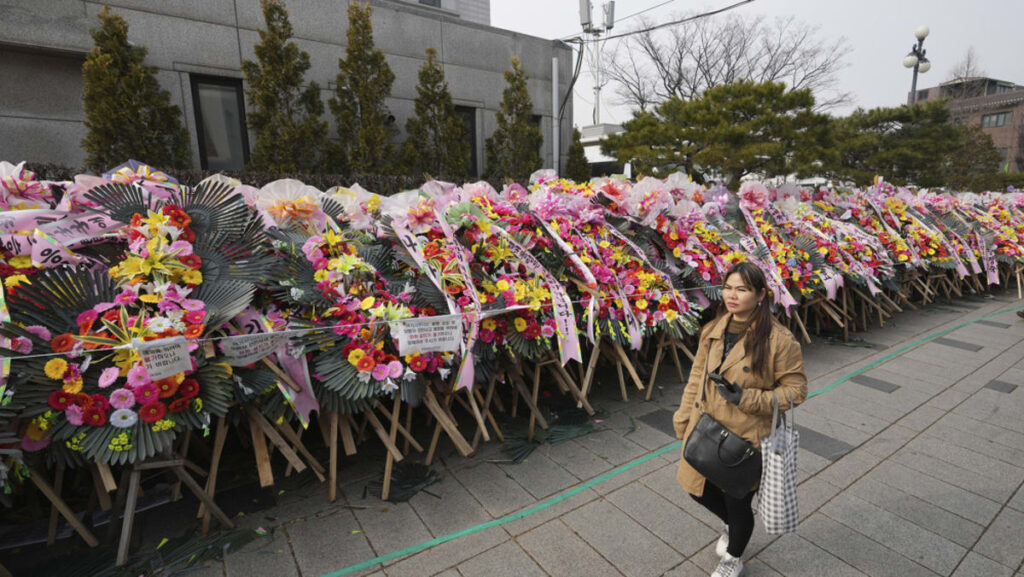The protest method has gained traction, with media coverage increasing in tandem over the last few years.
A search on Big Kinds, which collects and analyses articles from over 100 local news outlets, shows wreath protests received four times more media coverage in 2024 compared to 2023, reflecting the method’s growing popularity.
News articles about these protests started to appear in the early 2010s, though experts cannot specify their exact origin.
While dozens of flower shops say they haven’t received protest wreath orders, and a handful of online blogs promote wreath sales emphasising political neutrality, certain shops have become focal points for the movement.
Yoon Miyoung, of Seoul-based Dongsung Flower, said she has delivered over 1,000 wreaths since December, exclusively for pro-Yoon supporters. “We’ve sent out so many wreaths that Seoul is running out of flowers,” she said, adding that over one-third of her customers are in their 20s and 30s, with orders coming from outside South Korea including Japan, the United States and the Netherlands.
“Even though the form remains the same, the types of flowers or the messages differ,” said Choi Hang-sub, a sociology professor at Kookmin University.
“While wreaths avoid physical violence, the messages on funeral wreaths have evolved into a form of offline hate speech, similar to malicious online comments but now decorated with flowers.”
Professor Kim Hern Sik, from Jungwon University, said wreath protests remain “an isolated form of demonstration limited to certain political groups”, making it difficult to gain broader public support.
https://www.channelnewsasia.com/east-asia/south-korea-flower-wreath-political-protest-4896211


